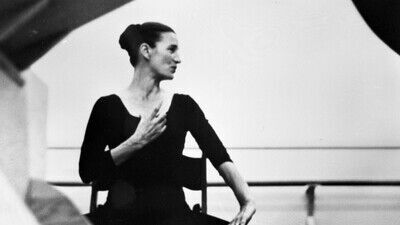It is actually not accurate to say that the documentary tells Lewitzky’s story. The best thing about the film is that it allows her to tell her own story. Other than comments from some of her colleagues, director Bridget Murnane makes most of the film audio from Lewitzky’s many interviews and speeches over seven decades, skillfully matched with archival images and footage.
She was dismissive of the term applied to her work, “modern dance,” which she said, “describes nothing. It only tells you it is not ballet.” Whatever category it was in, it was constantly evolving, constantly challenging expectations and traditions. She considered her lack of formal (traditional) dance training a gift because there were “no inhibitors to invention.” When asked how she would describe her dance, she says, “I wouldn’t.” Her point was that dance was its own expression that could not be translated through mere words.
That is why the footage of her as a dancer and with dancers are so compelling. She thought of dance as “taking gravity and letting it pull you through space.” Her dances expressed emotion and design, but she resisted narrative. She was not using movement to tell stories.
I was especially taken with her collaboration with one of the most influential fashion designers of the 1960s, Rudy Gernreich. His costume designs included long swaths of fabric that became a part of the dance by both extending and restricting motion and gesture. Her husband, Newell Taylor Reynolds, was a dancer turned architect whose ideas about space, form, and shape influenced her work, most strikingly when he pointed out the “unused space” above the heads of the dancers. He worked with her to add another platform, creating a second story to complement the dancers on stage. Lewitzky’s devoted partnership with Reynolds provides the film’s tenderest moments.
The National Endowment for the Arts, following the controversy over some of the highly provocative art it funded (called “obscene” or even blasphemous by some people), asked all grant recipients to sign a “non-obscenity” pledge. Lewitzky had no plans to present anything remotely obscene or offensive. And without the $72,000 grant, her dance troupe was unlikely to continue to exist. But it recalled her experience of being blacklisted after refusing to answer the questions of the Congressional committee. So, she held a press conference refusing to sign and turning down the grant. Seven years later, she was awarded the National Medal of the Arts by President Bill Clinton.

